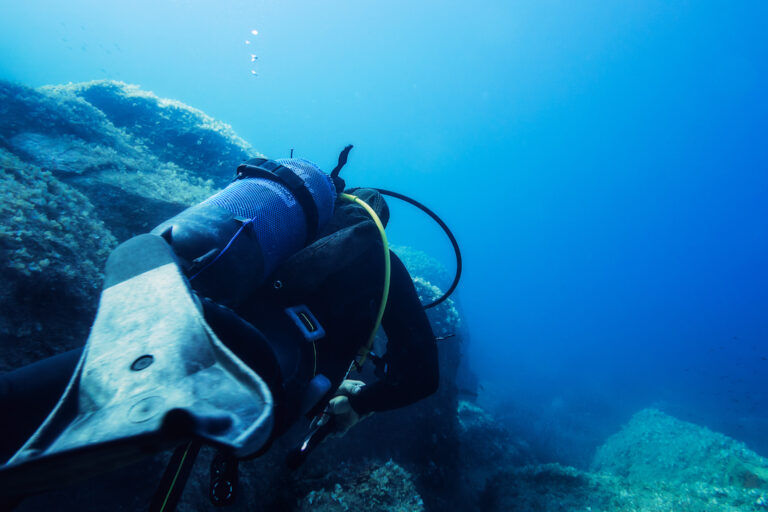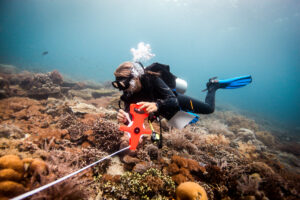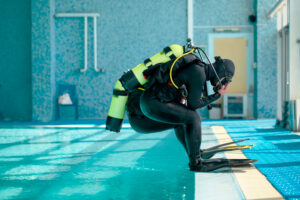What is Actual Bottom Time (ABT)?
Actual bottom time (ABT) is a fundamental term in the field of scuba diving. Its importance lies in its direct correlation with diver safety and the overall success of a dive. As suggested by its name, actual bottom time refers to the total amount of time that elapses from the moment a diver begins their descent until they initiate their ascent. During this period, the diver is submerged underwater, exploring marine life, inspecting underwater structures, or conducting scientific research. The calculation of actual bottom time is a critical aspect of dive planning and dive safety, as it has implications for decompression requirements, air supply management, and physiological considerations.
Calculating Actual Bottom Time
In the calculation of actual bottom time, the starting point is the moment a diver leaves the surface, signifying the start of the descent. The clock continues running throughout the time the diver spends at depth. The end point of actual bottom time is marked by the initiation of the ascent, not when the diver reaches the surface. This differentiation is important, as the ascent itself involves certain critical activities, such as safety stops and potential decompression stops, which have separate timing considerations.
Actual Bottom Time and Decompression
A deep understanding of actual bottom time is crucial in managing decompression sickness risks. Decompression sickness, or “the bends,” is a potentially severe condition caused by the formation of nitrogen bubbles in the body’s tissues and bloodstream due to a rapid ascent or spending too long at depth. By keeping a close eye on the actual bottom time, divers can ensure they do not exceed their non-decompression limits — the maximum time divers can spend at a certain depth without needing decompression stops during their ascent. In other words, actual bottom time plays an instrumental role in keeping divers within safe diving parameters and preventing decompression sickness.
Actual Bottom Time and Air Supply Management
Another area where actual bottom time plays a crucial role is air supply management. By monitoring actual bottom time, divers can plan and manage their air consumption effectively. It aids divers in estimating how long their air supply will last, thereby ensuring they have enough air for the entire dive, including reserves for emergencies. Mismanagement of actual bottom time can lead to situations where divers run low or even out of air while still underwater, leading to potentially dangerous situations.
Actual Bottom Time in Dive Logs
Actual bottom time is one of the key entries in a diver’s logbook. Divers record their actual bottom time for each dive, along with other essential data like maximum depth, water temperature, visibility, and observations made during the dive. This record serves multiple purposes — it allows divers to track their dive profiles over time, aids in planning future dives, and provides crucial information in the event of a diving accident or decompression sickness. Dive professionals and dive computers often review these logs to assess a diver’s experience level and to ensure safe dive practices.
Actual Bottom Time and Dive Planning
In dive planning, calculating the estimated actual bottom time is critical. Dive plans include details like the dive site, objectives of the dive, expected depth, and estimated actual bottom time. This plan helps divers anticipate potential issues, ensure adequate air supply, and avoid mandatory decompression stops. Any changes to the dive plan, especially those affecting actual bottom time, should be communicated and agreed upon by all members of the dive team.
Actual Bottom Time and Dive Computers
Dive computers, which have become an essential piece of diving equipment, play a significant role in monitoring and calculating ABT. These sophisticated devices start tracking ABT as soon as a diver submerges and stop when the ascent begins. They not only display the current ABT during the dive but also store this data for future reference. Dive computers often incorporate algorithms that take ABT into account, alongside depth and other factors, to provide real-time information on no-decompression limits, safety stop durations, and ascent rates. This information allows divers to make informed decisions during their dive and adjust their plans if necessary.
Actual Bottom Time and Nitrox Diving
The concept of actual bottom time becomes even more critical when divers use enriched air nitrox, a gas mix with a higher proportion of oxygen and a lower proportion of nitrogen compared to air. Nitrox allows divers to extend their actual bottom time at certain depths due to the lower nitrogen content, thereby reducing the risk of decompression sickness. However, because of the increased risk of oxygen toxicity with nitrox, divers must strictly adhere to their planned actual bottom time to avoid exceeding the maximum exposure limits.
Training and Actual Bottom Time
Understanding and effectively managing actual bottom time is a crucial part of scuba diving training. Various certification agencies, such as PADI (Professional Association of Diving Instructors), NAUI (National Association of Underwater Instructors), and SSI (Scuba Schools International), emphasize the importance of actual bottom time in their training programs. Novice divers are taught to calculate and monitor their actual bottom time and understand its impact on their safety and the success of their dives.
Actual Bottom Time: A Measure of Experience
In many ways, a diver’s actual bottom time can also serve as a measure of their experience. Divers with a high total actual bottom time accumulated over many dives have spent a significant amount of time underwater, suggesting a high level of experience. This experience often translates into improved skills, better air consumption rates, and increased comfort underwater. For this reason, dive operations may require divers to have a certain amount of actual bottom time before allowing them to participate in more challenging dives.
Actual bottom time is an integral part of the scuba diving lexicon. Its understanding and management are essential for diver safety, effective dive planning, and overall diving enjoyment. Whether it’s maintaining a logbook, planning a dive, or assessing a diver’s experience, actual bottom time plays a central role. With the advances in diving technology and increased focus on diver safety, the significance of accurately monitoring and recording actual bottom time continues to grow.

















